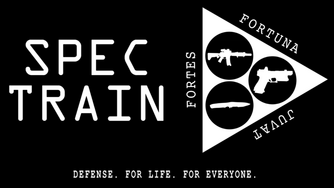I'm looking to start loading/ reloading 5.56, 9mm, and a few others. I know nothing about it.
Any advise on good beginner equipment or anything of that nature?
Get several manuals and read them. Some people really like the Lee book. I am lukewarm on it. I have one but rarely use it. It does have a good how-to section, but most of the other manuals do also. The data in the Lee book are sometimes old, very nonspecific about particular bullets, and often quite lacking in choices of powders. The data are taken from other sources and are not developed by Lee. The same goes for those books that cover one single chambering. You should get data from a variety of sources that actually develop their own data and that are up to date. You can never have too many manuals or too much data. Many data will not be the same from source to source, but that is the nature of the beast. My go-to manual has been the most recent Hornady for the past 50 years mainly because I use lots of Hornady bullets. Powder makers often have data on the internet.
Buy good stuff from the beginning. I have no brand loyalty since I have equipment from many makers. Some are better than others. You may notice a good many threads bashing certain makers but very few threads bashing others. There is generally a good reason for this. You can pay a little less and still make good reloads but you will probably be better served spending a little bit more money to get better gear. A bargain is no bargain if you have to replace it with something that works better.
You live or die by your powder scale. Get a good balance beam and a set of check weights. I use powder droppers but always check them with a balance beam scale.
I started with a single stage press back in the 1960's when I was in about the 8th grade. I still have all my fingers and most of my eyebrows. Reloading is not difficult, but be very meticulous about double checking things and following published data. Getting adventurous can get you into trouble rather quickly.
My first press and dies were a Lyman, but I have been using mainly RCBS and Redding presses and dies for the last 40 years. No telling how many rounds I have made on my old Rockchucker. I bought a Dillon 550 about a decade ago and use it for about a dozen different chamberings. It can turn out 9mm about as fast as you can pull the handle and feed in cases and bullets.
I do more case prep for 233 rounds, but that can be done using the 550 for sizing/depriming. The 223 cases may need to have a crimp removed around the primer pocket. There are lots of tools available to do that. I generally use a reamer mounted in an electric drill. Swagers work fine also. The 223 cases (not the 9mm) may need to be trimmed. Lots of tools are available for this. I generally use a Lee trimmer with a guide and cutter that quickly trims a case mounted in a universal chuck in my electric drill. One of those deburring/champhering tools takes off the rough edges with a light twist or two. I like to hand seat primers for 223 so I can more easily feel how they seat. Some of the cases with crimped primer pockets can still be a problem even though you removed the crimp. I like a hand tool for this so I do not have to take the sizing die out of my Dillon for priming cases. Make sure you have no high primers. High primers can produce unwanted excitement at the range in autoloading rifles. Once the cases have been prepped and primed, I run them through the Dillon by putting them into the powder station. I visually check each and every case to make sure the powder dropped before I move it on to the next station.
Some people just run 223 through a progressive from start to finish just like a 9mm and load good ammo, but I like to do more case prep for the 223 because of the variety of cases I use.
I might add that if you are so lacking in mechanical ability that you can not figure out how to use something like a Dillon 550 safely and effectively, then loading is probably not for you. It is not that difficult. You have to set up each of your dies the same way as you would with a single stage. A progressive just does several things at once after you have each station adjusted properly.
Last edited:


